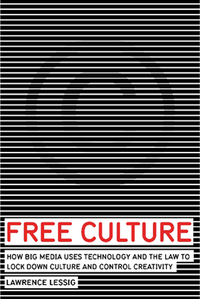If you arrived at this post thinking you might get pointers to places where you can download software for free, I'm sorry to disappoint you. NOT :)
A post on the system managers mailing list of ACM SIGGRAPH about possibly forming a Free Software SIG (Special Interest group) got me thinking again about Open Source. On gnu.org it is made clear that the 'Free' in 'Free Software' should be interpreted as referring to 'Freedom' and not just without monetary charge ("'free' as in 'free speech', not as in 'free beer'.."). And therefore it has to be open source, since only that gives you the freedom to see its inner workings and alter it.
One of the main reasons why I'm interested in free software is its relation to democracy. We want our media to be free, since that is a prerequisite for the functioning of democracy (Freedom of Speech only works if there are also means by which dissident voices can make themselves heard). Now that the most media outlets have turned digital the means by which the information is distributed has to be free as well. Monopolies in media land are bad for free speech. Proprietary file formats and closed software controlling the flow of news are too. And as for DRM....
A monopoly in the mobile phone business sounds a bit scary as well. Anybody think the iPhone will actually give Apple / AT&T too strong a hold on that market? I'm pretty sure they get a huge chunk of the +$400 segment simply by creating it. :) Anyway, I was interesting to find out through an article in the New York Times that "Motorola, based in Schaumburg, Ill., plans to sell this summer the Razr 2, the successor to its once-popular Razr upgraded with a Linux operating system and full-scale Web browser." I hope they will make it open source, like this one!
Related post: > ANTITRUST <



